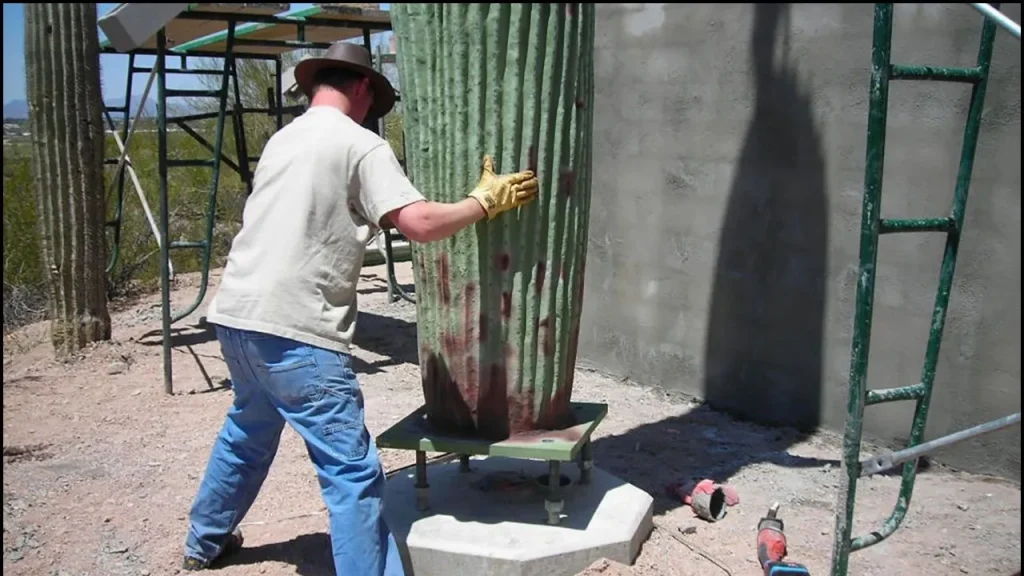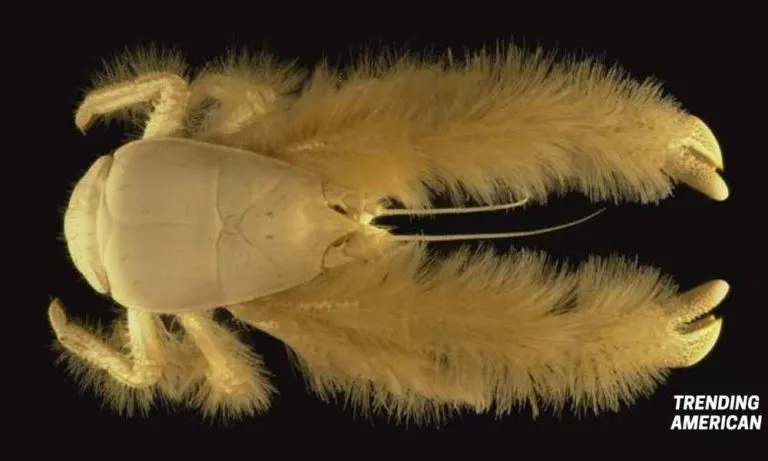Carefully Concealed In Arizona Cacti Are Cellphone Towers!
In the vast Arizona desert, cell phone towers that typically tower over communities, have been hidden inside cactus-shaped disguises. These structures are not only functional, ensuring uninterrupted communication services. But they also aim to maintain the natural aesthetic of the environment. Borrowing from the spy jargon, people call this way of hiding cellphone towers as cactuses “stealth technology.” These hidden towers are carefully designed to look like saguaro cacti, blending into the natural surroundings of the American Southwest. Let’s have a closer look.
The Concept of Arizona Cacti Are Cellphone Towers
Cellphone towers, by their very nature, are not particularly attractive structures. Standing tall and utilitarian, they often disrupt the beauty of natural landscapes. In response to complaints from residents and environmental advocates, companies like Verizon, AT&T, and T-Mobile have implemented stealth technology. This is to make these necessary structures less noticeable.

The saguaro cactus, a giant plant found in the Arizona desert, serves as the perfect model for these stealth towers. It can grow to be as tall as 40 feet. This provides enough space to house the necessary telecommunications equipment. To the casual observer, these artificial cacti are indistinguishable from the real thing.
They carefully craft the towers to mimic the exact size, shape, and color of living saguaros. This allows them to blend seamlessly into the desert landscape. This approach has proven effective. In balancing the need for reliable cellphone coverage with the desire to preserve the visual integrity of natural environments.
How These Towers Operate
Inside these artificial saguaros, the technology functions in much the same way as any other cellphone tower. Radio antennas, placed inside the hollowed-out body of the cactus, transmit and receive signals. This keep cellphone users connected. The signals are critical for maintaining mobile service, allowing people to make calls, send texts, and access the internet.
The placement of these towers is also strategic. According to experts, positioning them in remote or scenic areas is essential. This ensures that cellphone coverage extends even to places where traditional towers might be deemed too intrusive.

It is worth noting that these stealth towers are primarily located in desert regions with high tourist traffic. For example such as near hiking trails or national parks. It is also noted that telecommunications companies work closely with local authorities and environmental agencies. This is to ensure that the placement of these towers does not harm local wildlife or disturb the ecosystem. This collaboration helps to address concerns that adding artificial structures to natural environments might have unintended consequences.
Real-world examples in Arizona Cacti Are Cellphone Towers
Arizona has been a pioneer in the use of stealth cellphone towers, particularly those disguised as saguaros. Phoenix, Scottsdale, and other desert cities have seen a growing number of these hidden towers pop up over the past decade. In Desert Mountain, an upscale residential community located near Scottsdale, cellphone towers in the form of cacti are a common sight.
According to a report by Desert Mountain Homes Online, residents appreciate the way these disguised towers blend into the landscape without sacrificing cellular service.
“Cellphone towers are a necessary evil, but nobody wants to look at them. These cactus towers are the perfect solution. You can’t even tell they’re there, but I always have full bars on my phone.”
said a Scottsdale resident in an interview.
Another example comes from a 2011 report by Deadzones.com, which highlighted Phoenix’s early adoption of these stealth towers. To improve coverage without disrupting the city’s iconic desert views, Phoenix officials approved the installation of cactus-shaped towers throughout the metropolitan area. These towers, which stand alongside actual saguaros in parks and along highways, have largely gone unnoticed by the public—a testament to the effectiveness of their design.

Telecommunications Companies’ Involvement
Telecommunications giants such as AT&T, Verizon, and T-Mobile have been at the forefront of developing and deploying these stealth towers. According to a post on AT&T’s innovation blog, the company views these disguised towers as an important part of its commitment to improving coverage while respecting the local environment.
“We understand that cellphone towers are a critical part of modern life, but we also know that people don’t want them to be eyesores. By using stealth technology, we can provide the coverage our customers need without compromising the beauty of their surroundings.”
AT & T’s blog stated.
Verizon has similarly embraced this approach, particularly in areas where preserving the natural landscape is a top priority. A spokesperson for the company noted that these disguised towers are part of Verizon’s broader efforts to “innovate in ways that respect the environment.”
T-Mobile, too, has invested in stealth technology, with several cactus-shaped towers installed in tourist-heavy areas of Arizona. These companies often collaborate with local authorities and environmental organizations to determine the best locations for these towers, ensuring that they serve the needs of both the community and the environment.
Environmental Considerations when Arizona Cacti Are Cellphone Towers
One of the key concerns with the installation of cellphone towers—disguised or otherwise—is their potential impact on the local environment. In Arizona, the saguaro cactus is a protected species under state law, and any interference with these plants can result in hefty fines. To avoid legal issues and protect the desert ecosystem, telecommunications companies must obtain permits and conduct environmental impact assessments before installing their disguised towers. These assessments ensure that the towers do not disrupt wildlife habitats or interfere with the natural growth of real cacti.
In many cases, these towers are placed in areas where saguaros do not naturally grow, further minimizing their environmental impact. Additionally, the towers are designed to withstand harsh desert conditions, including extreme heat, high winds, and occasional flooding. According to experts, the artificial cacti are made from materials that are both durable and environmentally friendly, reducing the risk of harm to the surrounding landscape.
Public Reception and Future Expansion
Public reaction to these stealth towers has been largely positive. In areas like Desert Mountain and Phoenix, residents have praised the innovative approach, noting that the towers provide much-needed cellphone coverage without spoiling the natural beauty of the desert. Tourists visiting Arizona’s national parks and hiking trails have also expressed appreciation for the hidden towers, which allow them to stay connected without detracting from the scenic views.
As demand for cellphone coverage continues to grow, particularly in remote and rural areas, it is likely that the use of stealth technology will expand. Telecommunications companies are already exploring other forms of disguises for cellphone towers, including palm trees, pine trees, and even boulders. In the Arizona desert, however, the saguaro cactus remains the most popular choice for hiding cellphone towers.

The success of these disguised towers in Arizona has even inspired other states to adopt similar approaches. In California, for example, telecommunications companies have begun installing palm tree-shaped towers in urban areas, while in Colorado, pine tree-shaped towers have been introduced in mountainous regions. As technology advances, these stealth towers will likely become even more sophisticated, further blurring the line between technology and nature.
Conclusion
The practice of disguising cellphone towers as saguaros in Arizona is a fascinating example of how technology can be integrated into natural landscapes without causing significant disruption. By blending in with their surroundings, these stealth towers provide critical communication services while preserving the beauty of the desert. As demand for cellphone coverage increases, and as public awareness of environmental preservation grows, the use of stealth technology in telecommunications is likely to become even more widespread.
Also Read
Fousey Taken by Police After Going Missing for Several Hours
KSI Joins Britain’s Got Talent as a Guest Judge, and Fans Are Unhappy About It







